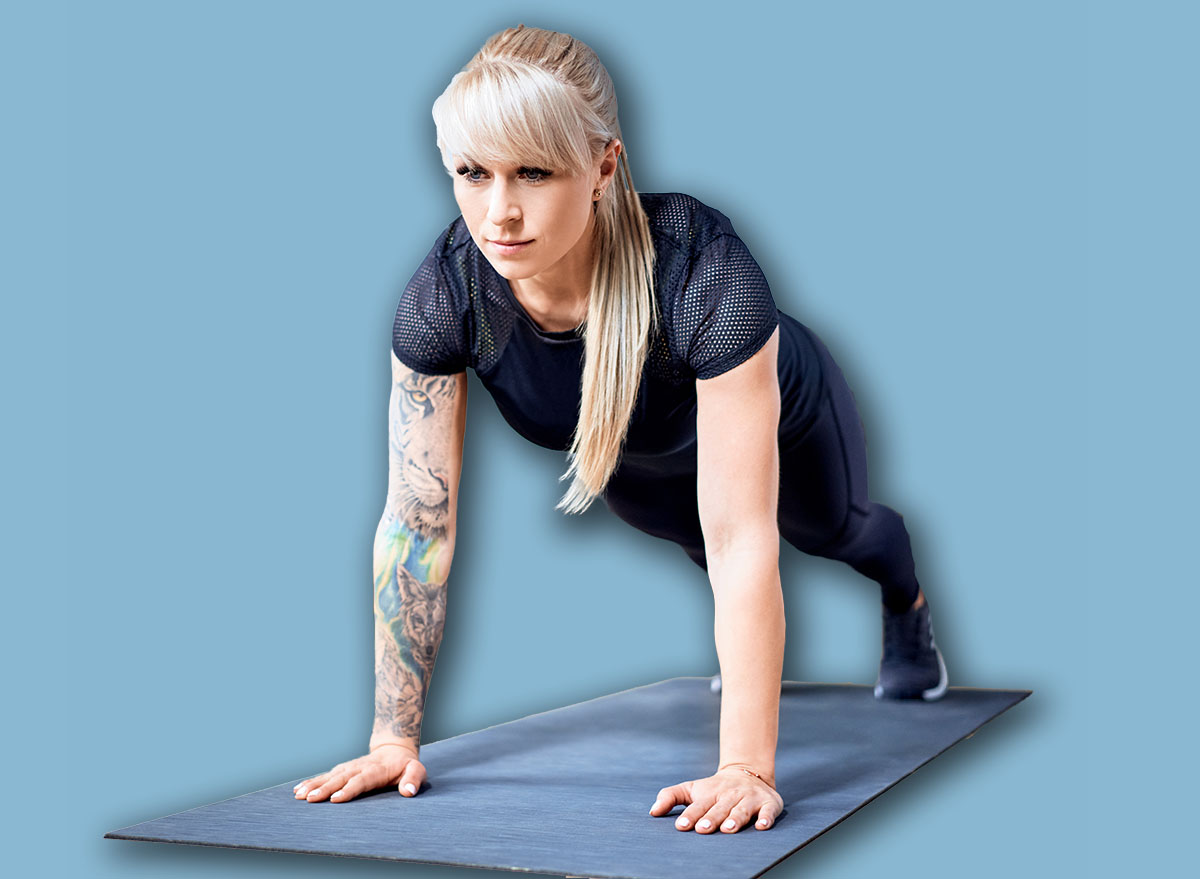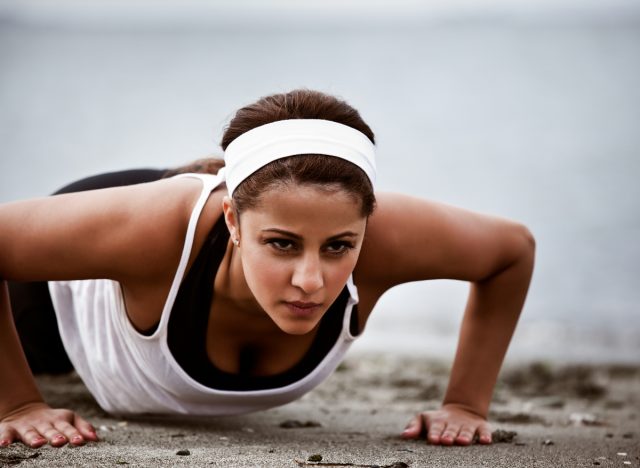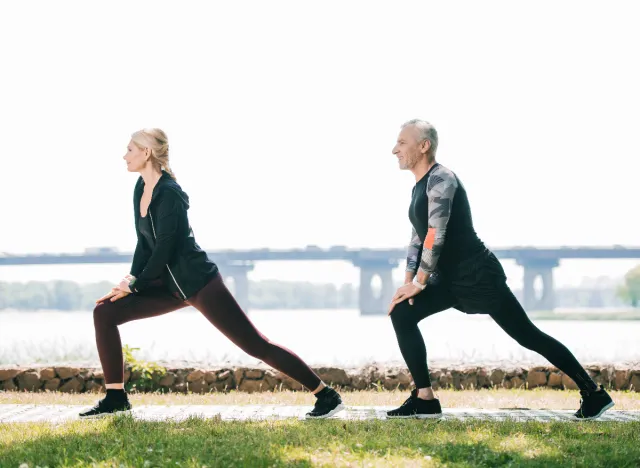This 9-Minute Bodyweight Strength Flow Builds More Muscle Than 45 Minutes of Gym Machines After 40

You don’t need a room full of machines to build real strength after the age of 40. The most effective workouts often come from the simplest tools you already have: your body, the floor, and a bit of consistency. When you learn how to move through strength patterns that challenge your muscles and coordination, you’ll discover that time and equipment are no longer barriers.
This 9-minute bodyweight flow brings the best of mobility, strength, and endurance into one powerful sequence. Each movement blends control and tension, teaching your body to generate force efficiently without overloading your joints. The more you flow, the stronger your foundation becomes.
Forget sitting through endless machine reps that only work one muscle at a time. This short routine activates multiple muscle groups with each move, improving balance, posture, and overall body stability while raising your heart rate high enough to burn calories.
You can complete this anywhere—your living room, garage, or hotel room—and still walk away feeling like you’ve trained every major muscle group. Nine minutes of focus and effort is all it takes to start building a body that feels powerful, capable, and ready for anything.
The 9-Minute Bodyweight Strength Flow

What you need: Just your bodyweight and a small space to move. Perform this flow as a circuit, moving from one exercise to the next with little rest. The entire routine takes about nine minutes to complete.
The Routine:
- Bodyweight Squats – 45 seconds
- Push-Ups – 45 seconds
- Reverse Lunges – 45 seconds
- Plank to Shoulder Tap – 45 seconds
Rest 30 seconds, then repeat for a total of two rounds.
Directions
Complete the exercises in order, keeping transitions brief to maintain a steady heart rate. Focus on the full range of motion and proper control. If your form starts to break, slow down rather than stopping. Once you complete all four exercises, rest briefly and repeat.
Bodyweight Squats
Squats build strength through your legs, hips, and core while training your body to move powerfully and efficiently. They mimic everyday patterns like sitting, standing, and climbing stairs, which makes them one of the best all-around moves for functional strength. Regular squatting helps protect your knees, boost mobility, and increase calorie burn through the activation of large muscles.
How to do it:
- Stand with your feet shoulder-width apart and toes slightly turned out.
- Brace your core and keep your chest tall.
- Lower your body by bending at the knees and hips, sitting back as if you were sitting in a chair.
- Go as low as your mobility allows while keeping your heels down.
- Drive through your heels to return to standing, squeezing your glutes at the top of the movement.
Best Variations: Jump squats, pulse squats, wall sits
Push-Ups
Push-ups strengthen your chest, shoulders, triceps, and core simultaneously. They build upper-body endurance and stability in a way that machines rarely replicate because your entire body must stay engaged. Over time, push-ups also improve shoulder health, posture, and pressing strength, which are essential for maintaining muscle mass and joint health after the age of 40.
How to do it:
- Begin in a high plank with your hands under your shoulders.
- Brace your core and keep your body in a straight line from head to heels.
- Lower your chest toward the floor by bending your elbows at about a 45-degree angle.
- Pause briefly just above the floor.
- Press back up to the starting position while keeping your abs tight.
Best Variations: Incline push-ups, decline push-ups, shoulder tap push-ups
Reverse Lunges
Reverse lunges target your glutes, quads, and hamstrings while training balance and single-leg control. They place less stress on your knees than forward lunges and develop strength throughout your lower body, which translates to improved walking, running, and stair climbing. The unilateral nature also helps correct imbalances that can grow over time, improving coordination and reducing the risk of injury.
How to do it:
- Stand tall with your feet hip-width apart.
- Step one leg back and lower your body until both knees bend at 90 degrees.
- Keep your front knee stacked directly above your ankle, and keep your chest upright.
- Push through your front heel to return to the starting position.
- Alternate sides for the full duration.
Best Variations: Walking lunges, jump lunges, lunge pulses
Plank to Shoulder Tap
Planks paired with shoulder taps build core stability and shoulder endurance while challenging your balance and coordination. It strengthens the deep abdominal muscles that protect your spine and helps improve coordination between your upper and lower body. The constant core engagement makes it one of the most effective bodyweight exercises for maintaining strength, posture, and athletic control after the age of 40.
How to do it:
- Start in a high plank with your hands directly under your shoulders.
- Widen your feet slightly for balance.
- Keep your hips level and core tight.
- Lift one hand to tap the opposite shoulder without rotating your hips.
- Alternate sides in a smooth, controlled rhythm.
Best Variations: Forearm plank, plank to knee drive, plank walkouts
The Best Tips for Building Strength and Muscle After 40

Staying strong after 40 is about consistency, recovery, and purpose. Your body still has an incredible ability to adapt and grow stronger, but you need to give it the right stimulus and recovery to make it happen. Start by committing to short, effective sessions, such as this 9-minute flow, three to five times each week. These microbursts of effort compound quickly, building lean muscle, balance, and stamina without draining your energy.
Recovery becomes the secret ingredient. Aim for seven to nine hours of sleep, eat protein-rich meals that support muscle repair, and maintain high hydration levels throughout the day. A flexible, well-rested body performs better and builds muscle faster.
Finally, stay active beyond your workouts. Walk more often, stretch daily, and move with purpose throughout your day. Every bit of movement adds up to stronger muscles, healthier joints, and a higher metabolism.
Key Tips:
- Train with focus, not just effort. Each rep should feel deliberate and controlled.
- Gradually increase intensity by adding rounds or decreasing rest.
- Keep your core engaged during every movement to reinforce posture and balance.
- Use a warm-up and cooldown to keep joints healthy and movement fluid.
- Celebrate consistency over perfection. Small wins turn into long-term strength.
With the right mix of movement, rest, and nutrition, this 9-minute flow can reshape how you feel and perform every day. Building muscle after 40 isn’t about chasing youth—it’s about owning your strength for decades to come.